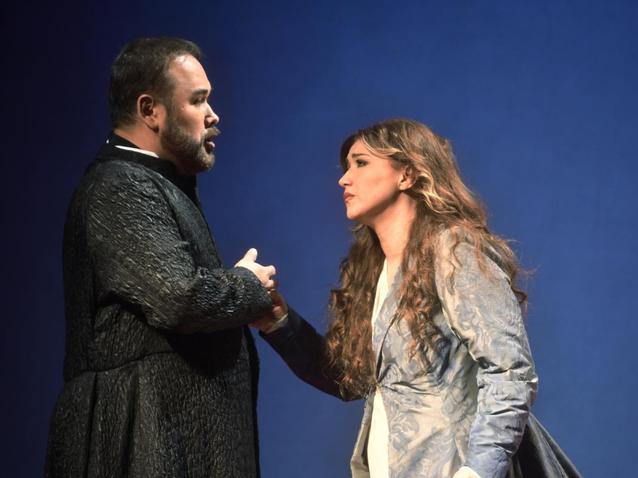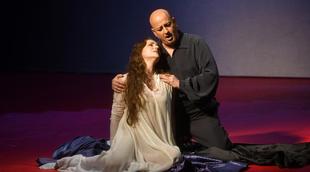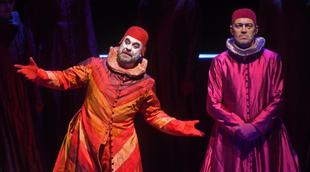 © Antoni Bofill
© Antoni Bofill
A dramatic conception that was complex to decipher and perhaps even polemic, a surprising and spectacular visual coldness and a totally convincing musical resolution were the three main axis of the performance of Rigoletto presented by Liceu.
It is difficult to dramatically face the great titles of the repertoire because it is a matter of finding the right balance between redundancy and extravagance, two extremes that are both artistically sterile. In this production of the Verdian title –which had already been seen in Madrid in 2009– the Dutch director Monique Wagemakers shakes violently the traditional conception of the central character. Rigoletto is no longer the amoral rude buffoon of the Duke that transforms into a loving father when he comes home to his daughter, but rather a dominant, cruel and possibly violent father. Wagemakers shifts the traditional take on Rigoletto completely.

Rigoletto © A. Bofill

Rigoletto © A. Bofill
It is true that this might betray the original intentions of the creator of the character, Victor Hugo, and of its operatic adapters, Verdi and Francesco Maria Piave. More importantly, it is also true that, at the expenses of the betrayal, it provides a powerful drama about the power relationships between the characters.
Visually, the stage created by Michael Levine, a spectacular 18 meters wide platform that moves up and down and inclines via hydraulic systems is fascinating and creates moments of great plastic beauty with the highlighting of a very efficient lighting. The main problem of this cold and beautiful scenography is its non-pertinence in regards to the subject. This stage could work with Rigoletto as well as with Der Fliegende Holländer, the next title that will be visiting Liceu. Actually, given its prodigious oscillation capacity, it appears far more adequate to stage the deck of the Dutch’s ship in the middle of the storm than the court of the Mantova Duke.
The visual beauty of this staging is significantly augmented by the surprising Renaissance inspired cassocks worn by all male characters, designed by Sandy Powell, winner of three Oscar awards to best costume for the films ‘Shakespeare in love’ (1998), ‘The Aviator’ (2004) and ‘The young Victoria’ (2009).
At the end of the day, though, be that with a cassock or with a tailcoat, Rigoletto, needs to be sung and, being one of the great titles in the repertoire, it needs to be well sung, as the audience does know what is expecting in this matter. With or without a novel dramaturgy, the audience expects the high notes at ending of La donna è mobile and the traditional coloratura in Caro nome.
In this regards the performance obtained a considerable success. In the star role of the hunched buffoon featured Carlos Alvarez, one of the best Rigoletto of the decade that, in full form, offered globally a very good performance, with a memorable Cortiggiani, vil razza and an always incisive, pertinent and perfectly in style phrasing. In following performances, Rigoletto will be sung by baritone Àngel Òdena, debuting in the role. Also, one performance will be given to the great Leo Nucci, an authentic legend in the interpretation of this role.
The Mexican tenor, Javier Camarena, debuting in the role of Duca was very good as well. He was generous in vehemence, high register, freshness and youth in a role that welcomes all these qualities. In the next performances Antonio Siragusa will be debuting in the role as well.
Correct, although not spectacular and irregular in the above mentioned coloratura of Caro nome (that everyone always imagines as perfectly immaculate) was Désirée Rancatore in the role of Gilda. Wonderfully powerful and convincing Ante Jerkunica as Saprafucile, very invested in the role Ketevan Kemoklidze as Maddalena. Finally, very insufficient Gianfranco Montresor as Monterone.
Riccardo Frizza generally obtained great results from the orchestra, although the ‘storm’ from the 3rd act resulted a little chaotic and the concertanti weren’t always perfectly together. A great level from the choir that, on top of singing, had to perform complex scenic movements.
the 27 of March, 2017 | Print
Comments